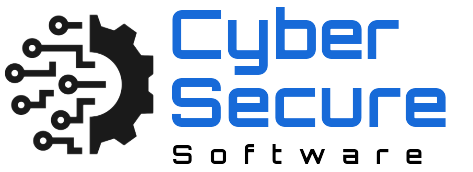Guide to Secure Networks
Welcome to Cyber Security Software, the leading information source for network Infrastructure Security. As cyber threats become more advanced and widespread, it is more important than ever to keep your network secure. Read: Our complete guide for the tools, tips and tricks to build and maintain a safe network. Whether you are a small business owner or an IT specialist, this is the guide for you to understand how to secure your network against malicious attacks and keep your data safe.
The first layer is called network security.
Network security is about measures to protect the integrity, confidentiality, and availability of data and resources when they are transmitted across or accessed through a network. The technology you can use to guard a network is varied, but you need to have multiple layers of defense, in technology and practice.
-
- 1. Set Up a Strong Network Infrastructure:
- I hope you know that the foundation for a secure network is to have a properly designed network architecture. This includes implementing function- and security-based zoning in your network. Some key features of a secure network architecture are::
- Firewalls:
- At a high level, firewalls are a key family of access control defenses. This can give more complete protection by using both network-based and host-based firewalls.
-
-
- Network Segmentation:
- Separation of network by dividing into segments — DMZ, internal network, guest network, etc. Each segment can be protected by its own policies and controls.
-
-
-
- Intrusion Detection and Prevention Systems (IDPS).
- IDS/IPS These systems also monitor network traffic for suspicious activity and can be configured to take action to prevent or mitigate threats in real-time.
- 2. Restrict Access Rights:
- It is especially needed to restrict who can come into the network and what they can do once inside, thereby limiting the impact of a potential security breach. Key practices include:
-
- Authentication and authorization:
- Verify the identity of users accessing your network with strong multi-factor authentication (MFA) Follow the principle of least privilege for access permissions
-
-
-
- Network Access Control (NAC):
- Watch this Last year topic video to learn how to implement NAC solutions for enforcement of security policies on devices that would be connecting to your network. NAC helps guarantee that only compliant and authorized devices gain access.
-
-
-
- Regular Audits:
- Regular access reviews and audits to ensure that access permissions are still appropriate and to identify any potential risks
- 3. Protect Network Devices and Endpoints::
- Each device that connects to your network is an entry point for cyber attacks. How to Secure These Devices? Take the following measures:
-
- Take the following measures:
- Keep network devices, operating systems, and applications updated and patched regularly to eliminate known vulnerabilities. Automated patch management solutions make this process simpler.
-
-
-
- Device Hardening:
- Turn off any unnecessary services and features on these devices to minimize potential attack vectors. Set up devices with strong credentials, only enabling encryption whenever relevant.
-
-
-
- Endpoint Security:
- Implement network segmentation and least privilege principles to limit users’ access to the network and implement strong access controls for critical systems and data.
- Endpoint Security:
- 4. Use encryption and secure communication:
- The main defense of system protections is encryption: keeping your network secure requires mutable encryption. Key practices include:
-
- Data Encryption:
- Ensure sensitive data is encrypted in transit and at rest. Implement strong encryption mechanisms and secure communication protocols (e.g., TLS/SSL) for data transmission.
-
-
-
- Virtual Private Networks (VPNs)
- Use VPNs for secure home access to your network. VPNs encrypt your data as it travels over public networks, preventing eavesdropping.
-
-
-
- Channels Of Communication That Are Secure
- Implement strong security measures to secure all communication channels used to stay connected, such as email and messaging systems.
- 5. Track and respond to security incidents:
- Detecting and responding to security incidents relies on constant observation and response. To improve your incident response capabilities embrace these best practices:
-
- SIEM (Security Information and Event Management)
- Collect and examine security logs from different repositories using SIEM solutions. It can also send out alerts in real time and help with investigating any suspicious activities.
-
-
-
- Incident Response Plan:
- Trained on Data until October 2023. Test and revise the plan regularly, to make sure that it works.
-
-
-
- Regular Monitoring:
- Be constantly vigilant of network traffic and system activity for indicators of anomalies or potential threats. Keeping an eye on your error rate can allow proactive measure take place even under rare conditions.
- 6. Educate and Train Your Team:
- It is a matter of human error in many incidents of security breach. The key to a secure network is consistent education and training of your own team. We recommend reading up on the following key areas:
-
- Security Awareness Training:
- Make employees aware of common threats (e.g., phishing) and how security is best maintained. Retraining sessions can work as reinforcement regarding security policies and procedures.
-
-
-
- Simulated Attacks:
- Run regular phishing tests and other security exercises to measure your team’s response and find areas for improvement.
-
Conclusion
Reduce Your Network Vulnerability with these Methods and Tips With Cyber Security Software, we are committed to guiding you in implementing robust network security measures that keep you one step ahead of emerging threats. For additional details on our security solutions and services — reach out to Cyber Security Software.
Cyber Security Software | Secure Network For Business Open in the above sentence, our data cuts up to Oct 2023
